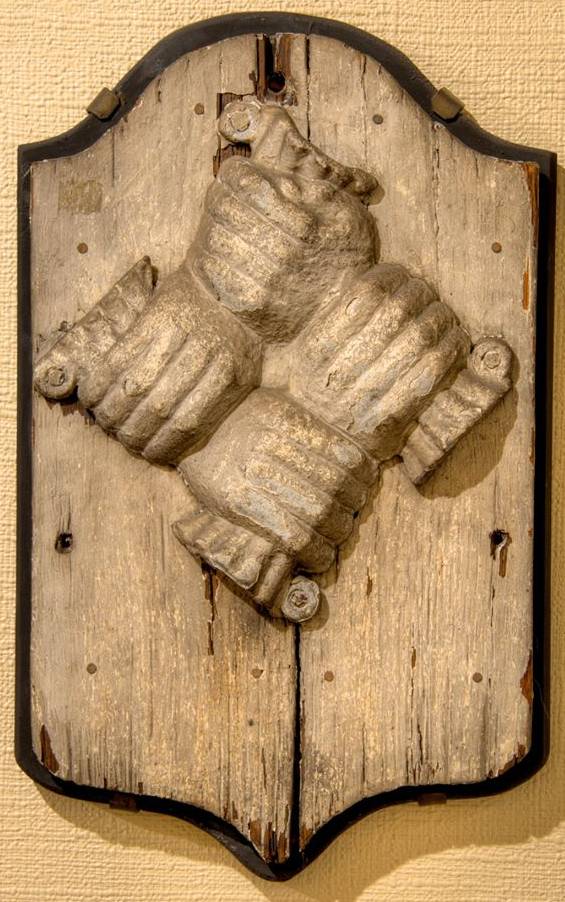The museum contains a large collection of fire marks. The information included here, was compiled by collections manager Bob Shea. Bob is a leading expert on American fire marks. His expertise is often sought by other museums. Bob also specializes in the early history of fire insurance, including the organization of insurance companies by volunteer firemen.
American fire marks, also known as “badges” and “house plates,” are signs issued by insurance companies that were affixed to the front of a property to mark that the property was insured for fire. Fire marks carried the symbol or the name of the insurer and were made of cast iron, sheet brass, lead, tinned sheet iron, copper or zinc. They came in various sizes and shapes, sometimes attached to a wooden plaque.
Used primarily for advertising purposes, fire marks were used from 1752 to circa 1900. Going back to their early practices, the Philadelphia Contributionship and The Baltimore Equitable Society still issue fire marks.
Alwin E. Bulau’s 1953 publication, Footprints of Assurance, is the reference for fire mark collectors, who identify fire marks by their Bulau number. The Fire Mark Circle of the Americas (FMCA) is an organization of persons interested in fire marks and other memorabilia of the early days of fire insurance and firefighting. For information, visit their website at firemarkcircle.org.
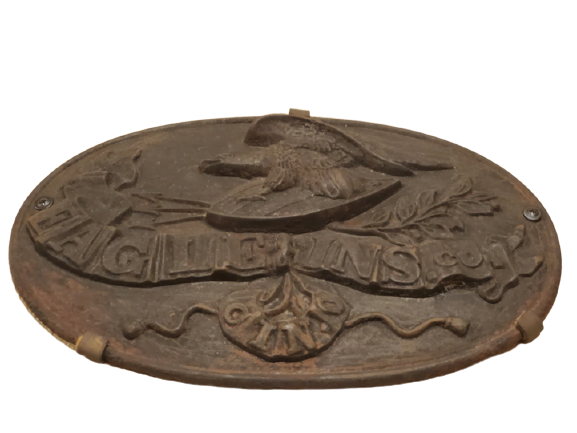
Eagle Insurance Company
Cincinnati, Ohio
1850 – 1894
Cast iron fire mark; Bulau #195; 12” X 8”
One of the finest examples of the craftsmanship of American iron foundries is illustrated in the details of this fire mark. Just a few years ago, I was able to see one of these original fire marks on a building in Cincinnati.
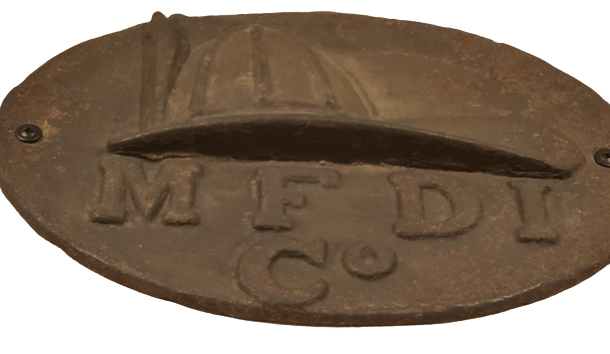
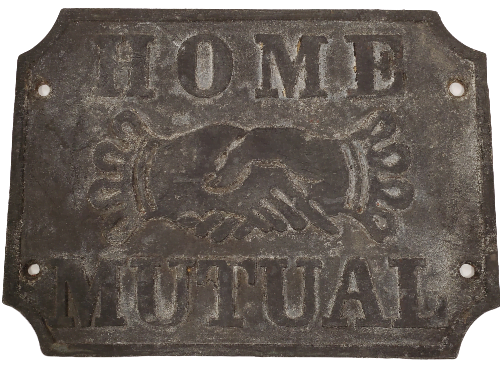
The Mutual Assurance Company for Insuring Houses from Loss by Fire
Philadelphia, Pennsylvania
1784 – 1996
Cast iron fire mark; Bulau #40; 8 1/2” X 8 3/4”, issued 1829 –
Known as the “Squatty Green Tree” this is the fourth variant of the four different cast iron fire marks issued by the Mutual Assurance Company. Shortly after they were made, the company discontinued issuing fire marks.
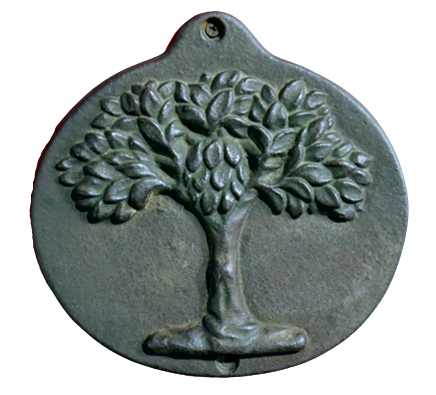
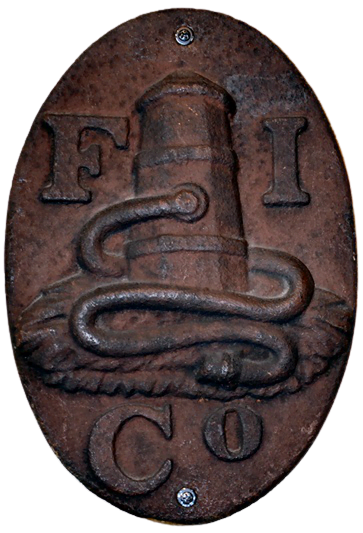
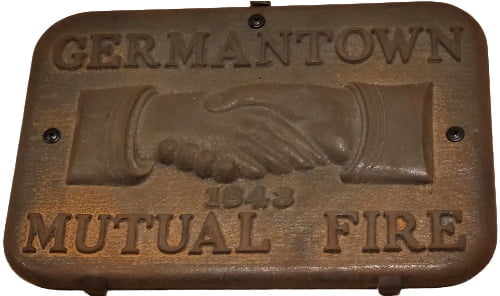
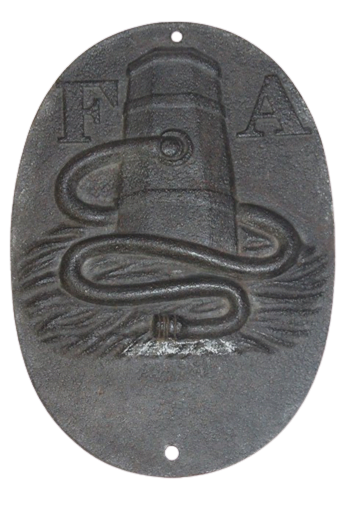
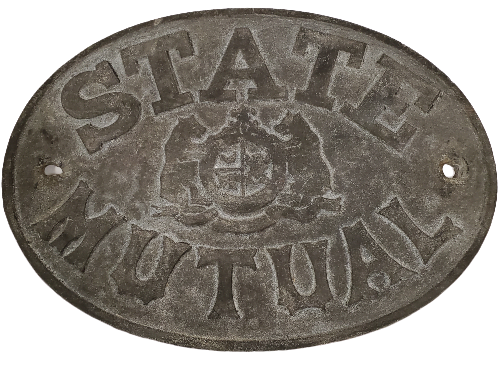
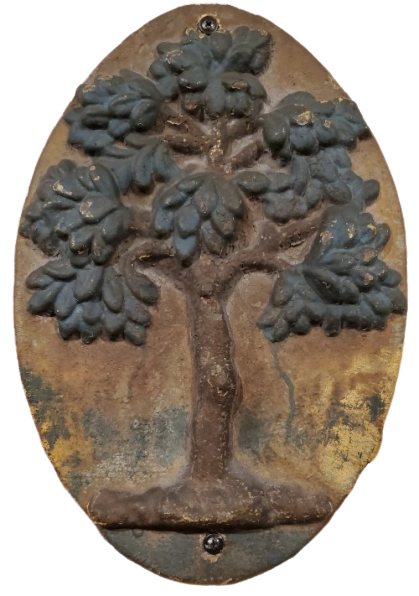
Washington Mutual Insurance Company
Boston, Massachusetts
1844 -1844
Brass fire mark; Bulau #154; 8 1/2” X 4”
From the Harold E. Gillingham Collection
This fire mark was issued by a newly chartered Massachusetts insurance company that never commenced business. There are at least five known to exist.
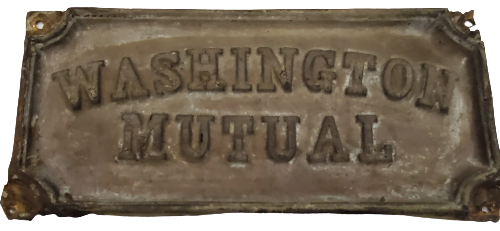
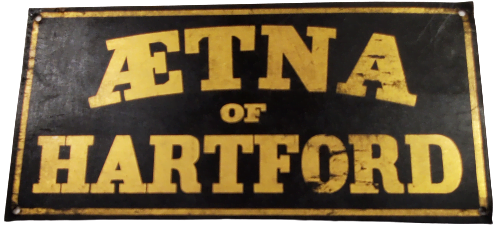
Aetna Insurance Company
Hartford, Connecticut
1819 – 1987
Tinned sheet iron fire mark, referred to as “tin”; Bulau #103; 6 1/2” X 3 3/8”
From the Harold E. Gillingham Collection
From stories of children thinking that “Aetna” was the name of a town, because of the frequency of them on buildings, to the description of one on his house in “Carl Sandburg: His Life and Works,” the Aetna “tin” was probably the most widely known fire mark in America during the latter half of the nineteenth century. With over a dozen variants, most of which with just the word “Aetna,” the Aetna Insurance Company of Hartford, Connecticut was one of the first east coast insurers to achieve success in the Midwest. Known as a “house plate,” it was the successful advertising of the Aetna that prompted over a hundred Midwest insurers to adopt their own fire mark.
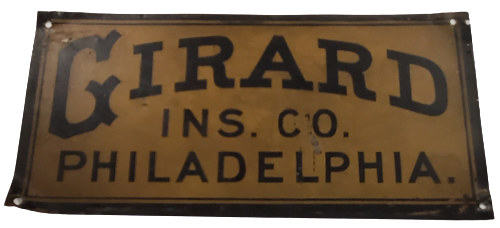
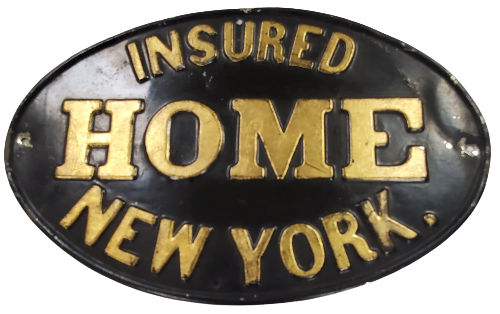
There were eight different insurance companies that began with the word “Home” and issued fire marks. Only the Home of New York survived the 20th century and continued to operate into the 21st century.
Lumbermen’s Insurance Company
Philadelphia, Pennsylvania
1873 – 1950
Cast iron fire mark; Bulau #442; 9 1/4” X 9 1/4 ”
From the Harold E. Gillingham Collection
The Lumbermen’s mark is an unusual motif of four logs overlapping at the ends with the monogram “L I Co” in the center. All though the company was organized by lumber dealers in reaction to high insurance rates for lumber risks, it pursued a general insurance business. In 1873 the Fire Association and the United Firemen’s Insurance Company were still issuing fire marks even though Philadelphia’s fire department was paid and the volunteer era had ended. No doubt, in order to compete, the Lumbermen’s also issued a fire mark. It was the last newly organized Philadelphia insurer to issue a cast iron fire mark.
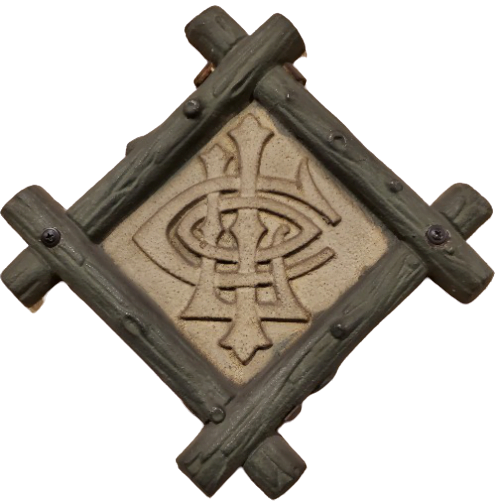
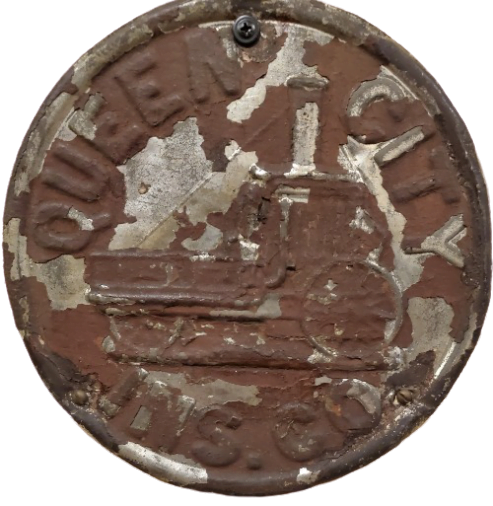
Queen City Insurance Company
Cincinnati, Ohio
1857 – 1870
Tinned sheet iron fire mark, referred to as “tin;” Bulau #207; 7 ¾” diam.
One of three different insurance companies in Cincinnati to use a fire engine on its fire mark.
“Queen City” is the nickname of Cincinnati. As a result of its rapid growth during the early 1800s and Cincinnati’s influence on commerce and the arts, the locals referred to their city as “The Queen of the West.”
The steam fire engine depicted is the famous “Uncle Joe Ross” made in 1852 by Alexander Latta and Abel Shawk, at the foundry of Miles Greenwood and using a boiler designed by John Buchanan. It was the first practical steam fire engine adopted by a municipality for firefighting.
Pittsburgh Navigation and Fire Insurance Company
Pittsburgh, Pennsylvania
1832 – 1849
Cast iron fire mark; Bulau #122; 12 1/2” X 9”; 6.8 pounds
From the Harold E. Gillingham Collection
Originally the lettering and raised rim were gold. The only one of three Pittsburgh companies that issued fire marks to survive the Great Fire of 1845. The company wrote fire and marine insurance. As a marine insurer, the company issued a 5% insurance discount on steamboats that did not serve liquor.
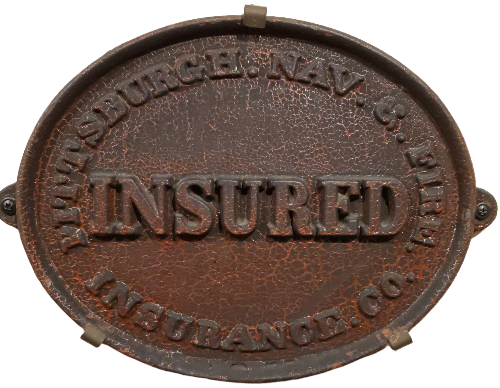
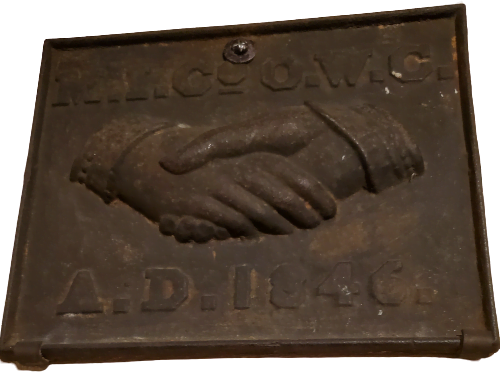
Mutual Insurance Company of Washington County
Hagerstown, Maryland
1845 – 1935
Cast iron fire mark; Bulau #163; 9 5/8” X 7 ¾”, issued 1847
From the Harold E. Gillingham Collection
Organized in 1845 and incorporated on January 22, 1846, the depiction of clasped hands on the company’s fire mark is another example of just how universal the symbol was to the early mutual insurance companies. The raised hands along with “M. I. Co. O. W. C., A. D. 1846.” tells the whole story.
North Saint Louis Mutual Fire Insurance Company
Saint Louis, Missouri
1865 – 1888
Zinc fire mark; Bulau #347; 7 1/2” X 5 1/2”
From the Harold E. Gillingham Collection
Originally chartered as the Tenth Ward Mutual Fire Insurance Company on February 15, 1864, this company advertised only in the Saint Louis German newspapers. No doubt, in order to appeal to a greater number of residents of the north area of Saint Louis, the company received approval from the state and changed its name to the North Saint Louis Mutual Fire Insurance Company on February 20, 1865.
The brick-red house paint on the mark is also found on many of the cast iron fire marks issued by the Philadelphia insurers.
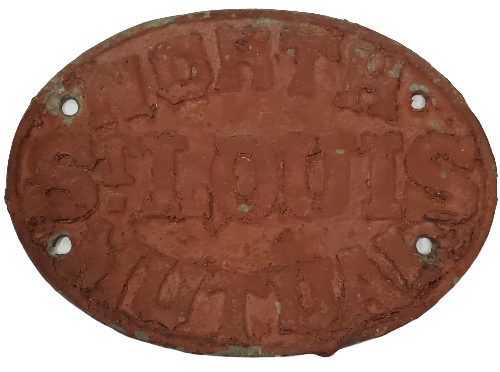
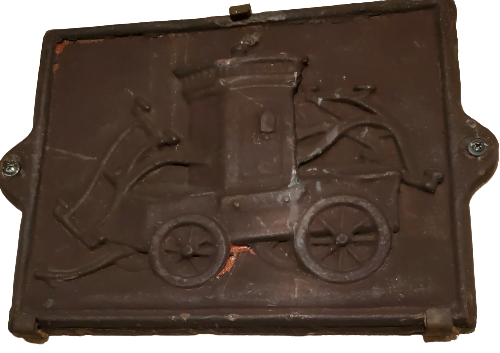
Hope Mutual Fire Insurance Company
St. Louis, Missouri
1857 – 1901
Zinc fire mark; Bulau #286; 6” X 6 3/4”
From the Harold E. Gillingham Collection
Only 18 out of the 320 known insurers to issue fire marks used fire marks made out of zinc. Of the 18 companies, 13 were from Saint Louis. Since Missouri was a major producer of zinc, the insurance companies used this inexpensive and durable metal for their fire marks. In addition, they were easy to cast and did not rust like a cast iron mark. Zinc fire marks were almost unknown to collectors of American marks in the early 1900s and today they are highly sought after.
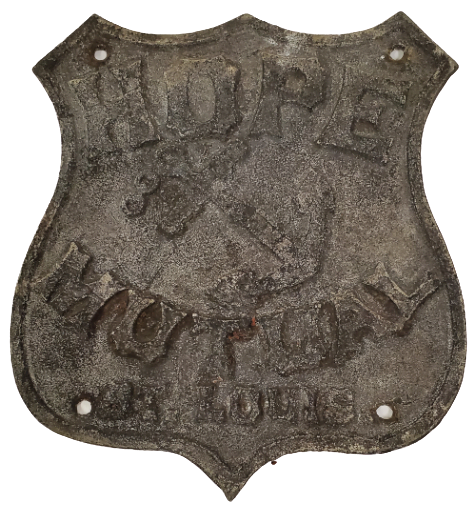
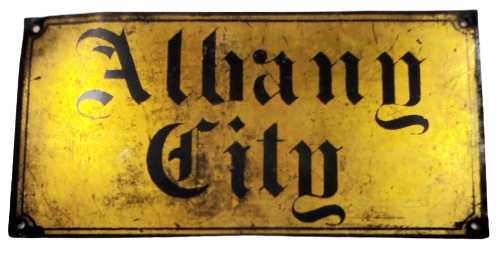
Albany City Fire Insurance Company
Albany, New York
1860 – 1871
Tinned sheet iron fire mark, referred to as “tin”; 6 9/16” X 3 5/15”
From the Harold E. Gillingham Collection
Like most east coast insurance companies writing fire insurance in the Midwest, the Albany City Fire Insurance Company issued fire marks, known at the time as “house plates.” Competition for business was so intense that many of the local insurers began issuing their own marks with the result that of the 320 known insurers to issue fire marks, most of the companies were from the Midwest. Additionally, 80 percent of all insurers issued tin marks, with most using only tin.
Discovered in the Museum’s collection by former Curator Firefighter Tom Tye, this previously unknown and rare mark is not listed in Footprints of Assurance.
The Mutual Assurance Company for Insuring Houses
from Loss by Fire
Philadelphia, Pennsylvania
1784 – 1996
Fire mark: lead tree mounted on a wood board
Concerned that trees in the front of properties hindered firefighters who had only buckets and small engines with which to fight the fire, the Philadelphia Contributionship banned insuring properties with this hazard. In 1874 disaffected policyholders rallied to protect their trees to form the second Philadelphia insurer, The Mutual Assurance Company. Resembling the operations of the Contributionship, the new company accepted the hazardous trees for an additional premium and adopted as their mark, or badge, a brightly colored lead green tree on a white board. The Green Tree became synonymous with The Mutual Assurance Company.
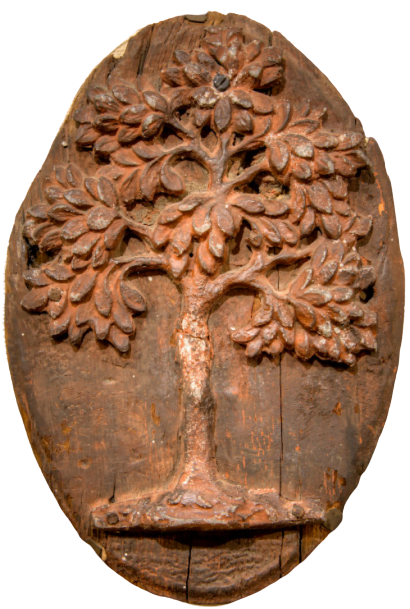
Associated Firemen’s Insurance Company
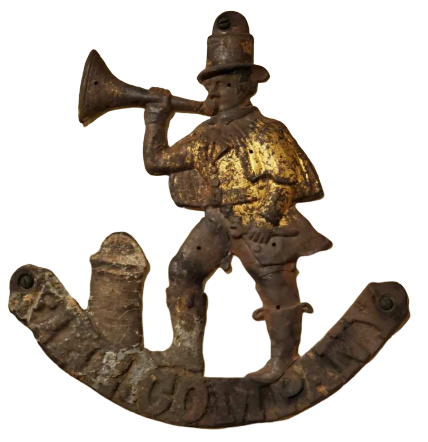
Pittsburgh, Pennsylvania
1850 – circa 1857
Cast iron fire mark
The cutout figure shows a partially gilded fireman with a wrench in his left hand standing by a hydrant giving orders on a trumpet. Below are the words “Fire Company.” One of five American fire marks that depict a volunteer fireman.
Firemen’s Insurance Company
Baltimore, Maryland
1825 – 1904
Cast iron fire mark
Originally owned and managed by the active and honorary volunteer firemen and the individual fire companies of Baltimore, the fire mark of the Firemen’s Insurance Company depicts a Philadelphia-style, double-decker end stroke hand engine used by the firemen in Baltimore at the time. This circular mark, whose engine was gold gilded, was one of the largest made in America and available to the policyholder for a one-time charge of $1.25 as long as the insurance was continued. If canceled, the mark was returned to the company.
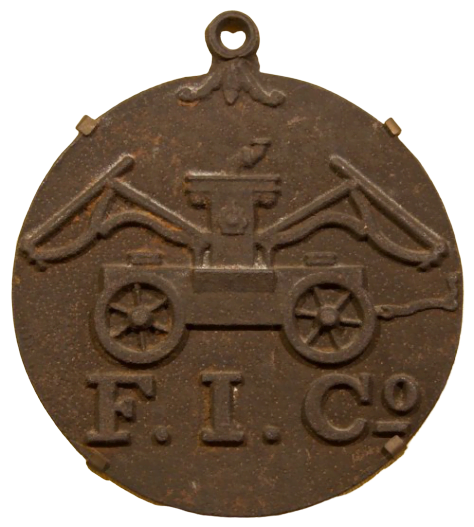
Fire Department Insurance Company
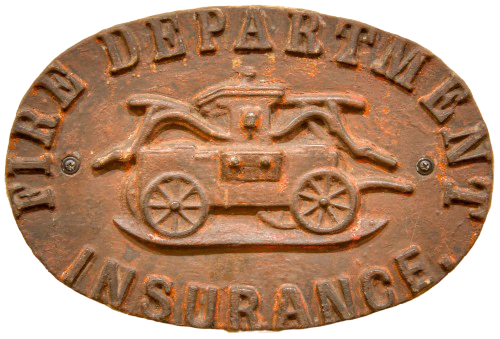
Cincinnati, Ohio
1837 – ca 1848
Fire mark; cast iron
In 1837 the volunteer firemen in Cincinnati organized a fire insurance company named the Fire Department Insurance Company. They issued a fire mark of which depicted a Philadelphia-style, double-decker end stroke hand engine. No doubt the fire mark was issued to advertise their new company which was in competition with the Firemen’s Insurance Company of Cincinnati.
Baltimore Equitable Society
Baltimore, Maryland
1784 – Present
Fire mark: cast iron
Circa 1927 this is the fifth style of fire mark issued by the company and shows the clasped hands symbolizing mutuality and the year of organization. The company still issues these marks, now made of aluminum. The bright gold hands and numbers on a black background may be seen on many homes throughout the Baltimore area.
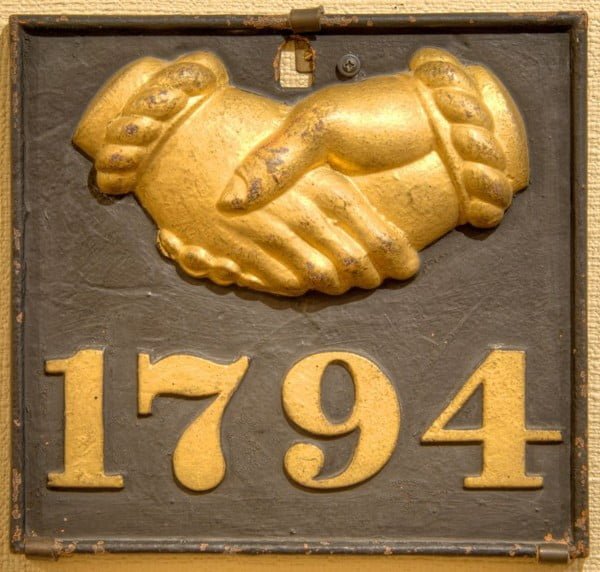
City Insurance Company
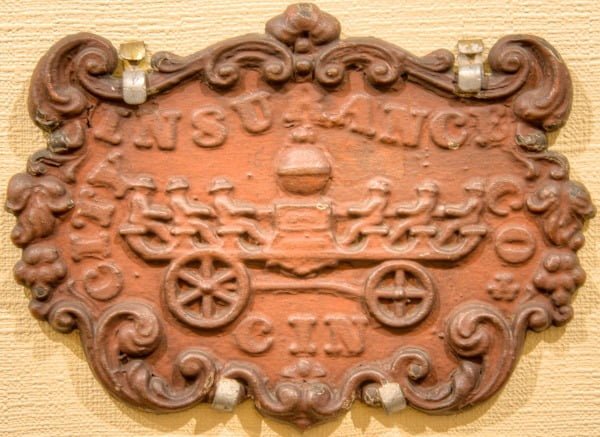
Cincinnati, Ohio
1849 – 1866
Fire mark: cast iron
The hand fire engine depicted is unusual because the brakes move horizontally with the men seated, instead of moving up and down with the men standing. Instead of pumping, they rowed. Hence, the nickname “Row Boat.” While six men are depicted on the mark, there would actually be twenty-four. The first rowboat engine was made in 1847 by D. L. Farnam for the Independence Fire Company #3, Cincinnati, Ohio. Overall, Cincinnati purchased at least nine such engines. With the development of the steam fire engine in 1853, also in Cincinnati, the rowboat engine passed into history. –Bob Shea
United Firemen’s Insurance Company
Philadelphia, Pennsylvania
1860 – 1956
Cast iron fire mark with policy #3339; issued April 5, 1872
The Fire Association of Philadelphia managed an insurance company bearing the same name. Not all fire engine, hose and ladder companies were able to join the Association due to the prohibitive entrance fee. Also, non-members did not receive any monetary assistance from the Association even though they fought fires and protected the city as much as the member companies. Because of this disadvantage, the non-member companies on August 2, 1860 chartered a new company named the United Firemen’s Insurance Company of Philadelphia. This new company issued a fire mark depicting a steam fire engine which was the latest in technology in the fight against fire. —Bob Shea
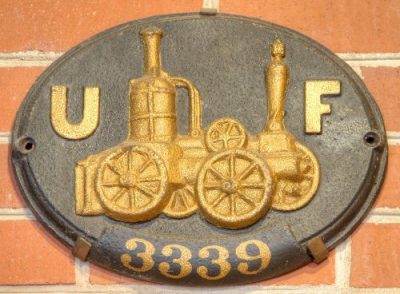
The INA Eagle
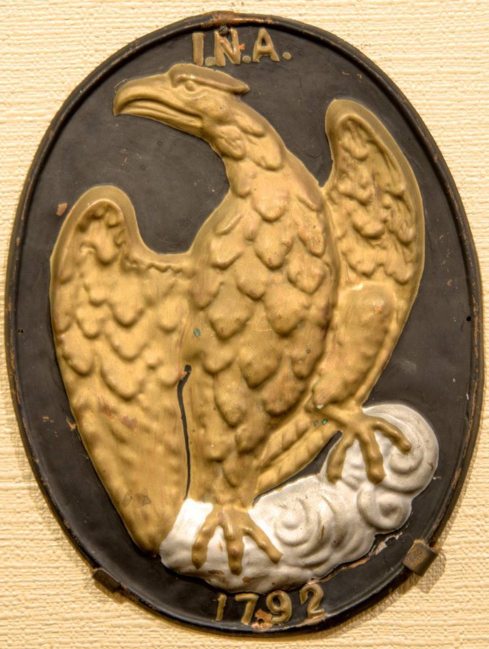
Insurance Company of North America
Philadelphia, Pennsylvania
1792 – Present
Copper fire mark; facsimile issued by the company circa 1930’s. In 1796 Claudius LeGrand designed the patriotic symbol of an eagle taking flight from a rock for the Insurance Company of North America. The eagle fire mark symbol, also used on its policy, was originally lead on wood and adopted for a copper plate after 1800. —Bob Shea
The Philadelphia Contributionship for the Insurance of Houses from Loss by Fire
Philadelphia, Pennsylvania
1752 – Present
Fire mark: Lead hands mounted on a wood board With Benjamin Franklin and volunteer firemen as principal organizers of the city’s first insurance company in 1752, the symbol of the four crossed hands on wood suggested both the idea of mutual support and the company’s relationship with the volunteer fire companies. In the event of fire, it was thought that the company’s badge, or mark, would enlist the assistance of fellow mutual policyholders who shared equally in losses and the four-handed fireman’s carry would remind the volunteer fire companies that fellow volunteers were policyholders. In addition, gilded hands on a black painted board served as advertising for the new insurance company. —Bob Shea
